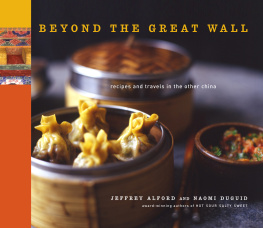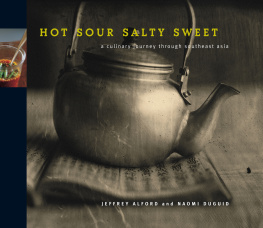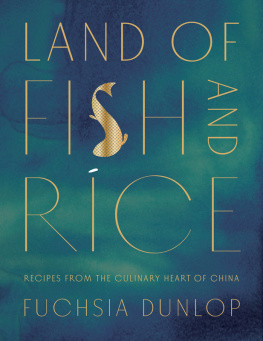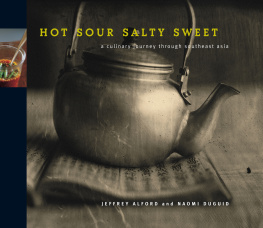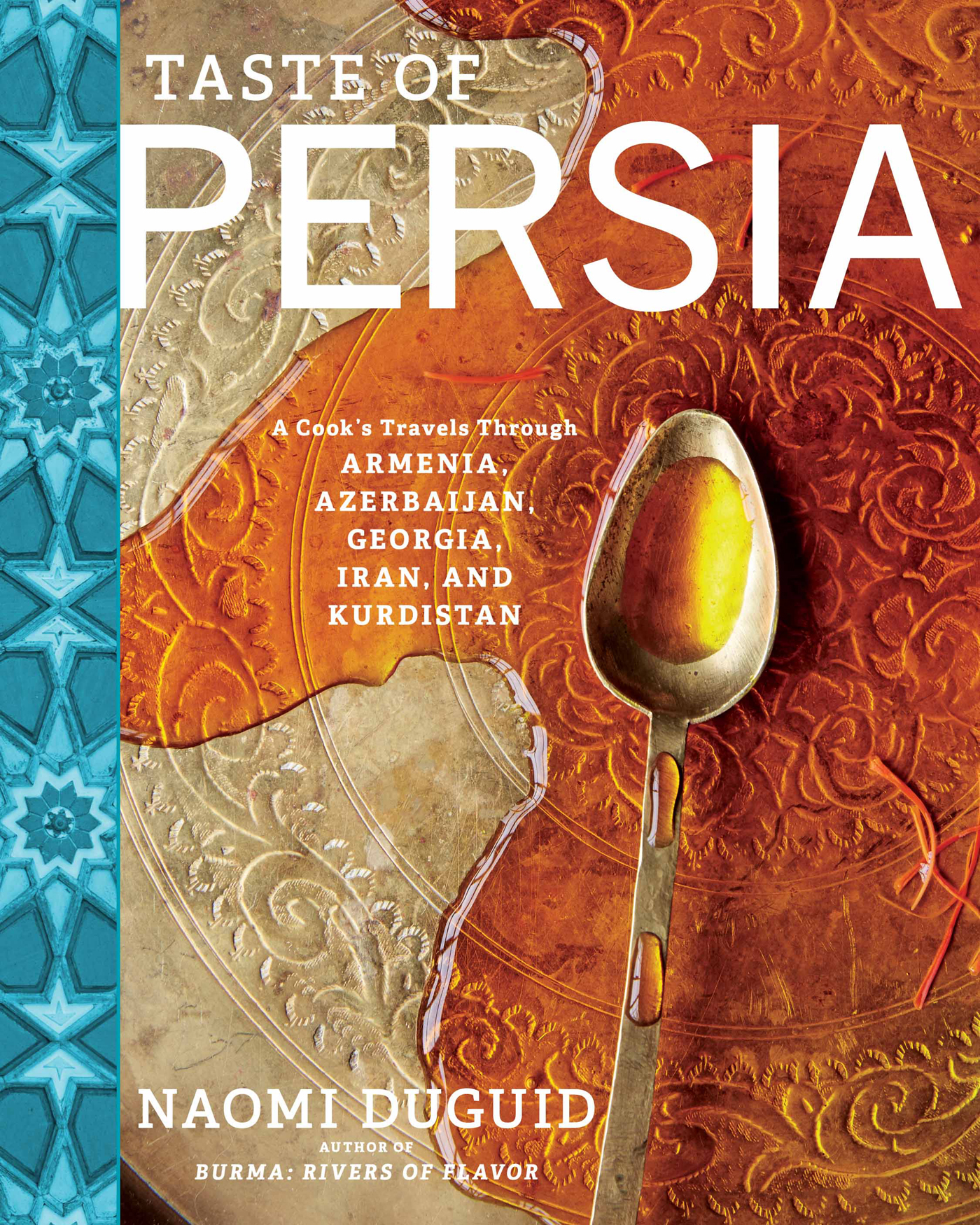Taste of
Persia
A Cooks Travels Through Armenia, Azerbaijan, Georgia, Iran, and Kurdistan
Naomi Duguid

New York
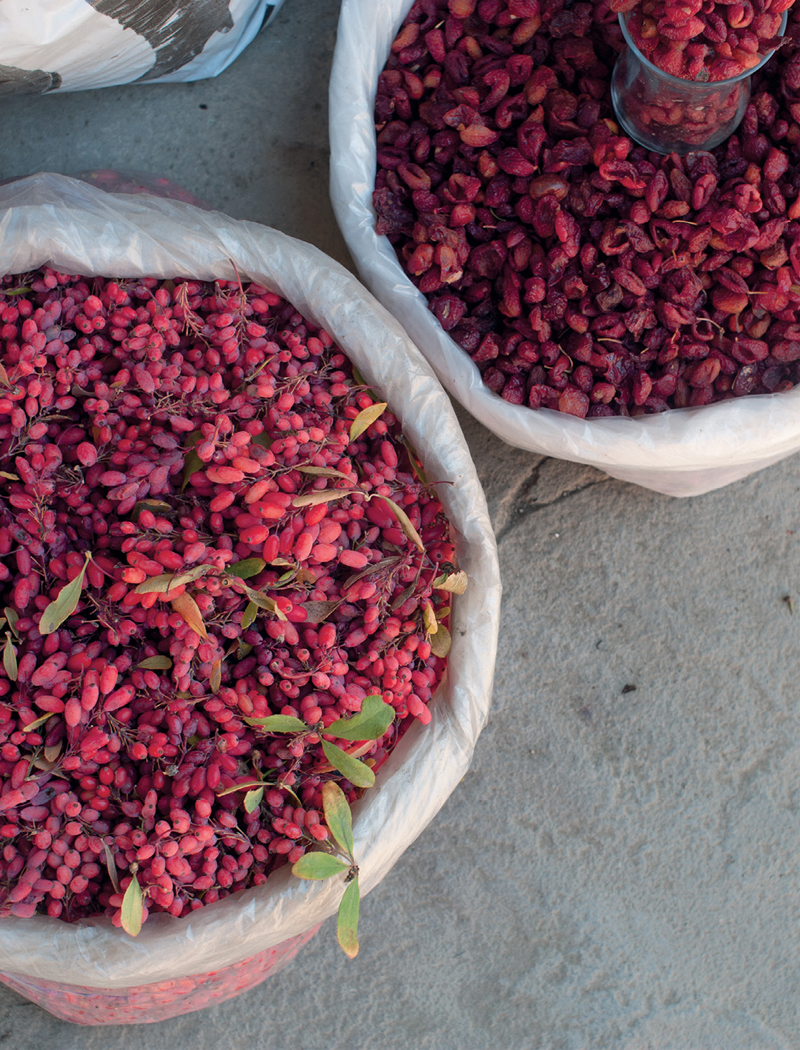
Lahich, Azerbaijan Fresh and dried barberries at a village shop.
Contents
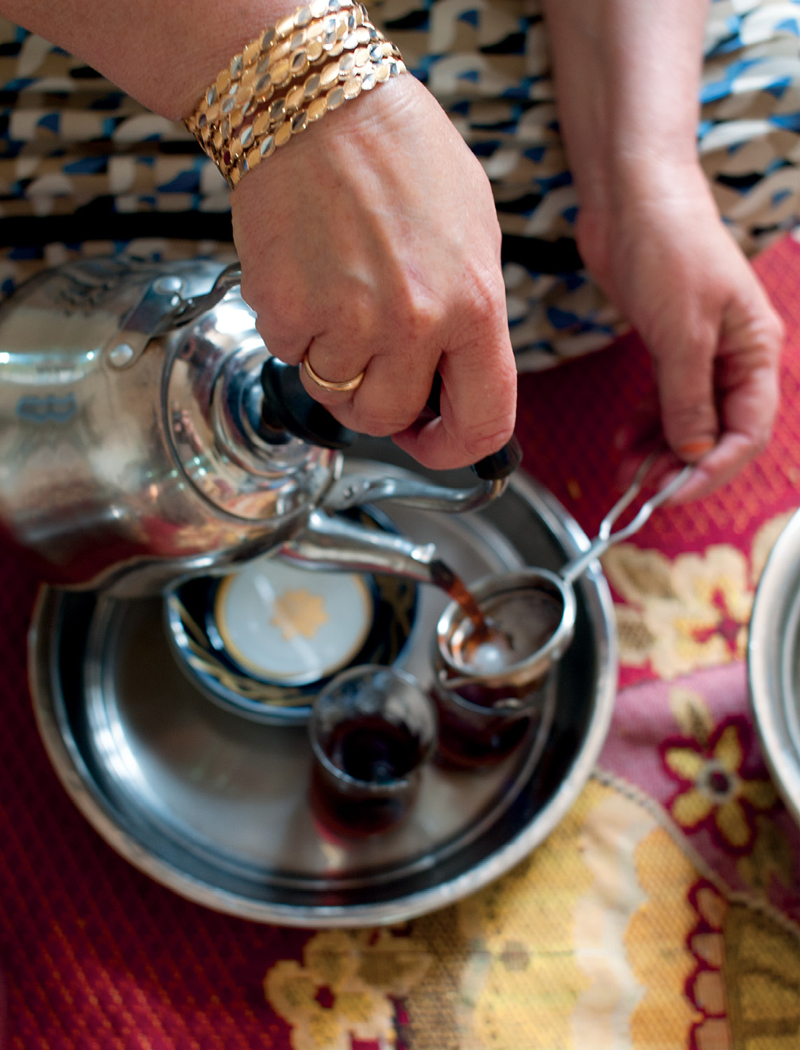
Halabja, Kurdistan Pouring tea at home, for guests.
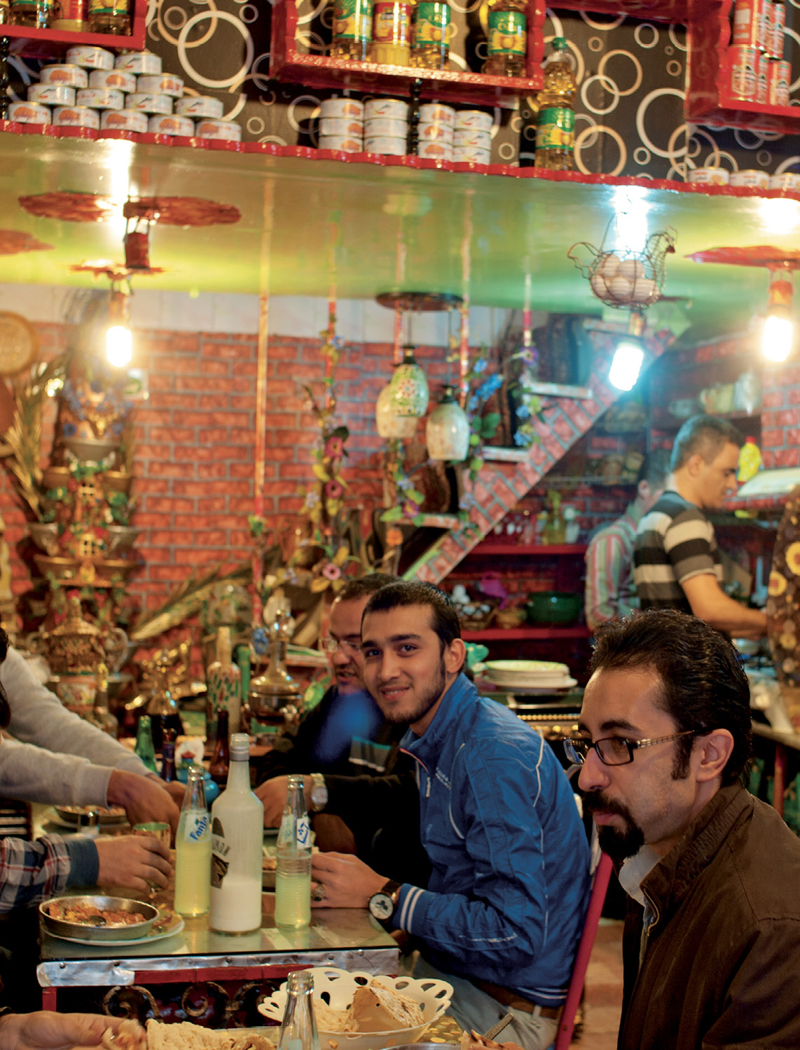
Tabriz, Iran A popular local eatery.
Introduction
On the wall of my office, I have a map that shows the Persian Empire under Darius the Great, who died in 486 BC. He ruled an empire first established by Cyrus the Great, the largest the world had ever known. Persia (present-day Iran) lay at the heart of the empire, which stretched as far west as Greece and, to the east, all the way to India.
When I first imagined this book, my idea was to write about the people and food of the Persian culinary region that centers on Iran but includes peoples in the immediate neighborhood: in Armenia, Azerbaijan, Georgia, and Kurdistan. The region extends from the Caucasus Mountains in the north to the southern tip of Iran, and lies between the Black Sea and the Caspian Sea.
The people here speak many different languages and follow many different religions. At the same time, they share a history, and they are all marked by Persian influences that date back to the time of Cyrus and Darius and continue in the modern era. The connections between them are found not in their different places of worship, nor in their many distinctive languages and alphabets, but in the kitchen, in the garden, and at the table.
I want to take you there to engage with the intensities of Georgian dishes; with the creative and subtle culinary traditions of Iran, Armenia, and Azerbaijan; and with the remarkable home cooking of the people of Kurdistan. The food is enticing, and the recipes are very friendly to the home cook. Flavors, textures, and ingredients will be familiar to anyone from a European or North American tradition. And that shouldnt be surprising, for Persian ingredients and culinary wisdom have influenced cuisines from India to Morocco to northern Europe.
Common elements in the cuisines of Persia and her neighbors in the Caucasus and Kurdistan include richly flavored bean dishes, flatbreads of many kinds, generous use of herbs and greens, plenty of cheese and yogurt, walnuts (used in sauces, marinades, and vegetarian pts), inventive soups and stews, savory dishes flavored with pomegranate and/or other fruits, and (for all but the Georgians) rice as a beloved staple. Common to all the peoples of the region is a culture of hospitality, of sharing food and drink with both friends and strangers, with generosity.
As you read through the recipes and stories, the maps ) will be of help.
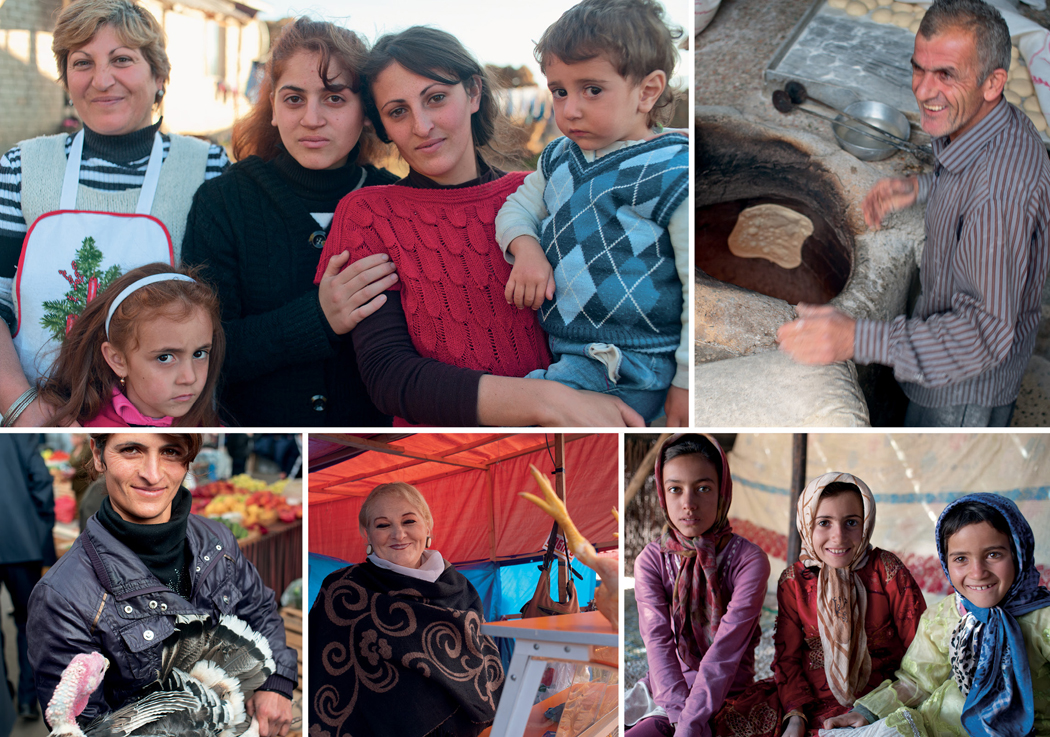
Clockwise from above left:
North of Yerevan, Armenia Tsayhlik with her daughters and grandchildren outside their home near Mount Aragats (see );
Massouleh, northern Iran a village baker with his tandoor oven (he works with incredible speed making lavash each morning);
near Shiraz, Iran Khameh girls in the mountains (see );
Tbilisi, Georgia a woman selling chicken at Deserteri Market;
Baku, Azerbaijan a woman carrying a live turkey at the big Taza Market.

Persepolis, Iran A carved procession of people bears offerings to the emperor in one of the most beautiful parts of the ruins in this ancient Persian capital.
A New Era
As it rejoins the community of nations, Iran is at last becoming more open to travelers from the West. Once they go, they will want to keep going back. Theres so much to explore and delight in.
People in Iran are pleased with this opening up. They are familiar with Western culture through films, the Internet, and social media, but they want direct contact and a free flow of people and ideas in both directions. Although many Iranians are not pleased with the rule of the ayatollahs, theyre proud of their country and their heritage: the glorious architecture of Isfahan, the lively streets of Tehran and Shiraz, their food, their films, their novels, their music, and much more.
The Caucasus countries are also now much more inviting to travelers, and theyre easier to get to than they have been for a century. After decades of rule by the USSR, Armenia, Azerbaijan, and Georgia have come out of that gray period and into full bloom. Travelers are discovering the regions spectacular landscapesthe snowy Caucasus Mountains, the coasts of the Black Sea and Caspian Sea, the fertile valleysand the wine, food, and generous hospitality of the people. The cities feel very European, from the buildings to the way people dress. Even in Soviet times, the food markets in Georgia, Armenia, and Azerbaijan were a break from the harshness of that era, the vendors lively and the fruits and vegetables glowing with color and ripeness. But now, as each of the Caucasus countries defines itself independently, theres a pride and confidence, and a sparkle in the air.
Nearby Kurdistan, the beautiful, hilly part of Iraq that lies along the Iranian border, is not Arab but Kurdish in language and culture. When I was in Kurdistan, the people I talked to were confident about the future, hoping that the underground oil wealth there would bring more prosperity to many people. But since then, the Kurds have had to repel the advance of ISIL and deal with thousands of refugees.
We dont know how things will evolve, but in the meantime, I am especially happy to be able to include stories, photographs, and recipes from Kurdistan in this bookwhile wishing for better and easier days to come. I hope that you will come to feel a connection with the people there too.
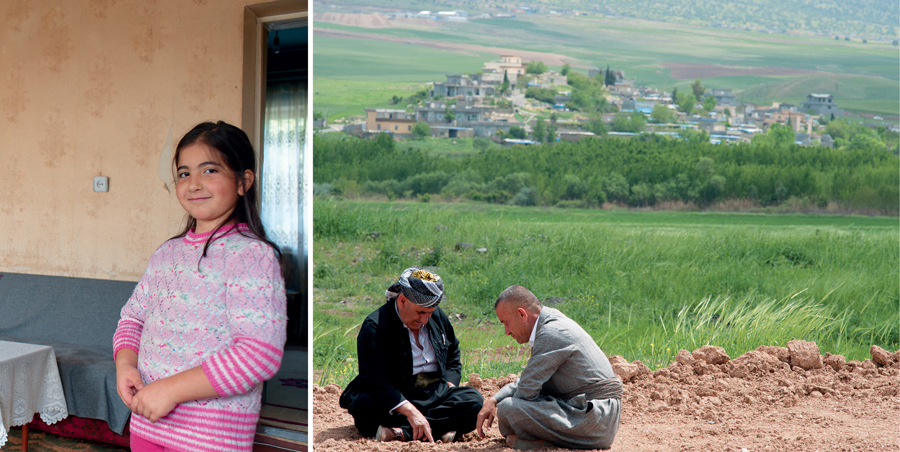
Left: A young Armenian girl at home outside Yerevan.
Right: Kurdish men seated by the road on the way to Dohuk, Kurdistan.
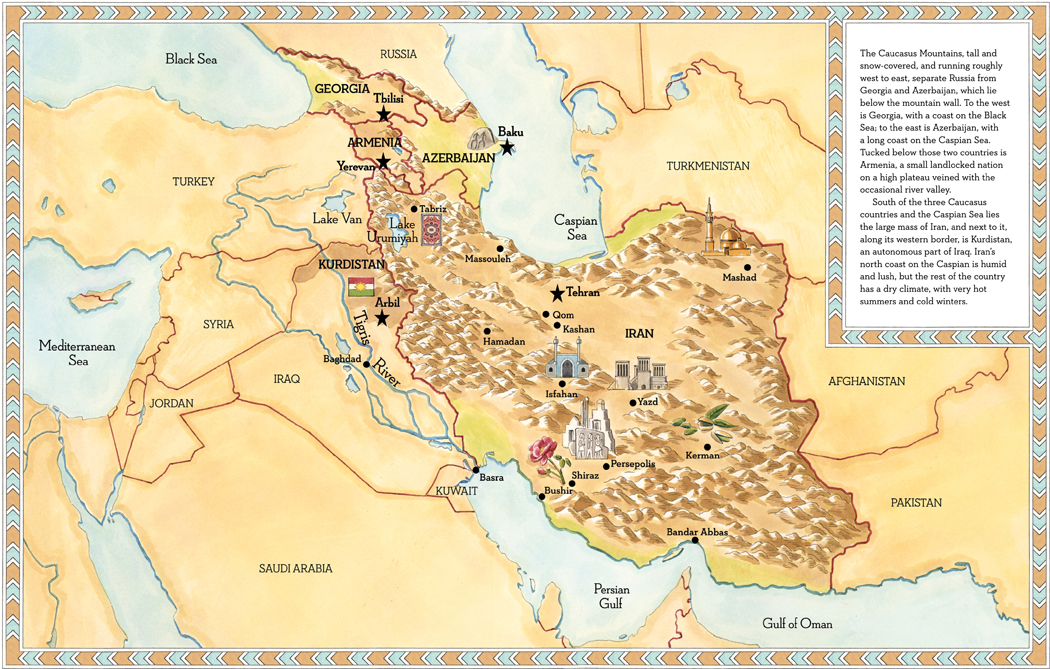
The Caucasus Mountains, tall and snow-covered, and running roughly west to east, separate Russia from Georgia and Azerbaijan, which lie below the mountain wall. To the west is Georgia, with a coast on the Black Sea; to the east is Azerbaijan, with a long coast on the Caspian Sea. Tucked below those two countries is Armenia, a small landlocked nation on a high plateau veined with the occasional river valley.




